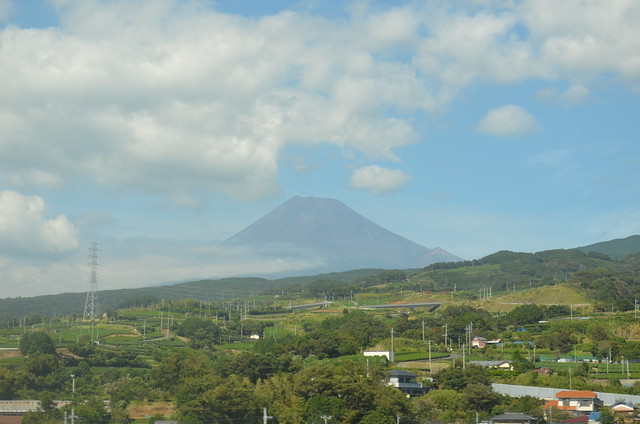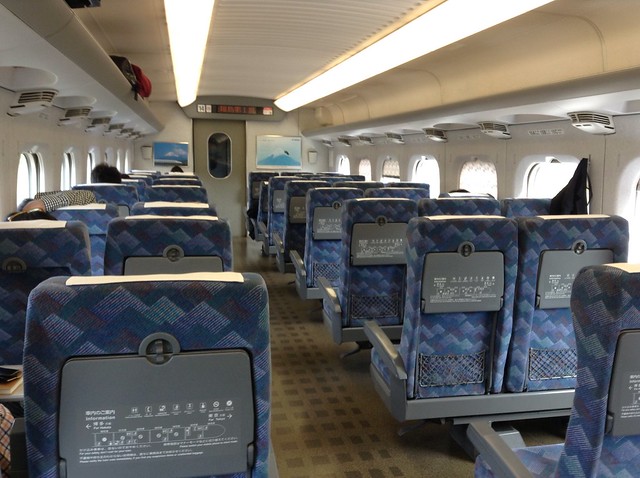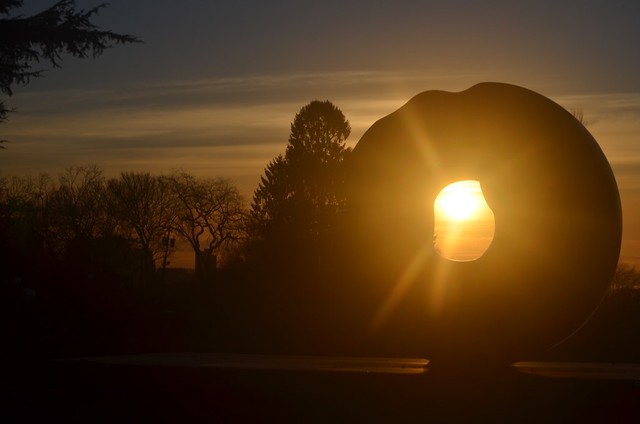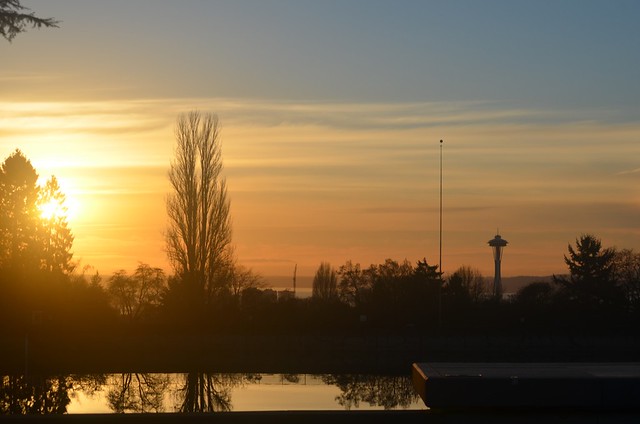This past September I traveled through Japan with my parents. My mom and I were heading back to Tokyo for our last few days. My mom was very excited by the possibility of seeing Mt. Fuji from the train, the closest we would get to this famous and sacred mountain.
We loved riding the Shinkansen, which is an elegant and efficient mode of travel. A little trivia: the seats are designed to swivel on their mounts, so you can turn them around. I loved knowing this. We even availed ourselves of this feature a few times, so we could face each other while we zipped through the landscape.
This was our last ride on the Bullet Train, and we are zooming past everything. It feels like we’ve reached the future. My mom gets more and more excited about seeing Mt. Fuji until she overcomes her own sense of propriety and asks a group of 4 women traveling together when we might see Fuji-san. They confer with each other and stop the conductor to ask him as well. Finally they arrive at a consensus: 2:45 p.m.
We continue to stare out the window, as if our eyeballs fixed on the horizon could make it materialize. At 2:32 (more or less), I catch a glimpse of what appears to be a volcanic dome, rising from the ground. I stand up and wave my arms at the demure group of ladies, pointing out the window. “Fuji-san,” I say to them. “Fuji-san.”
“No,” they tell me. They point to their watches and shake their heads, disappointed that I do not seem to understand how things work in Japan. Everything runs on its schedule, and the mountain will appear when it’s the right time. My mom and I continue to press our faces to the window, catching our breath as the mountain grows larger and larger. There are hills that occlude our sight, so it comes and goes. And finally, we reach the plain with an unobstructed view.
We turn to our Japanese travel companions and they smile at us, assured that it is now the proper time and Fuji-san has made its appearance. All is right with the world.
















